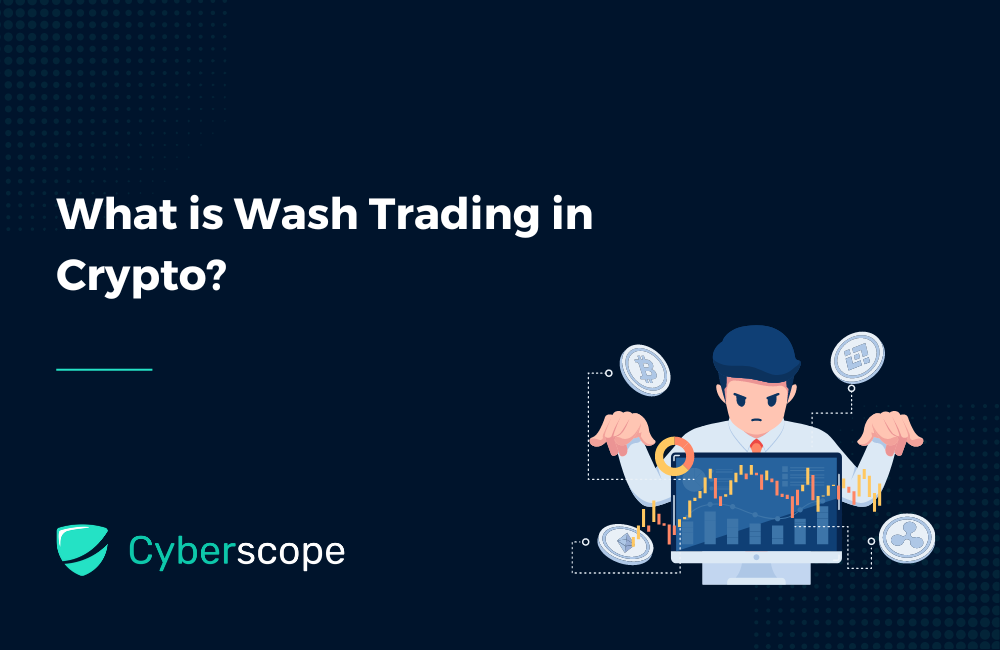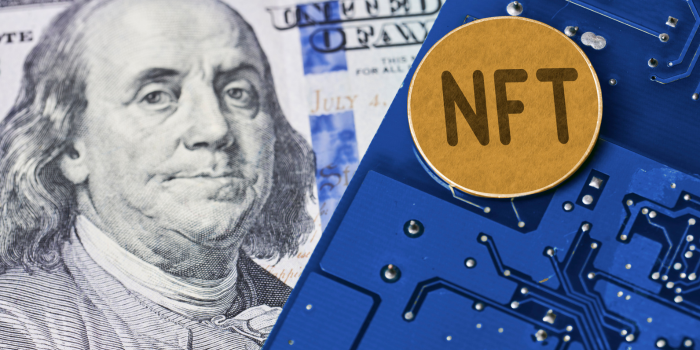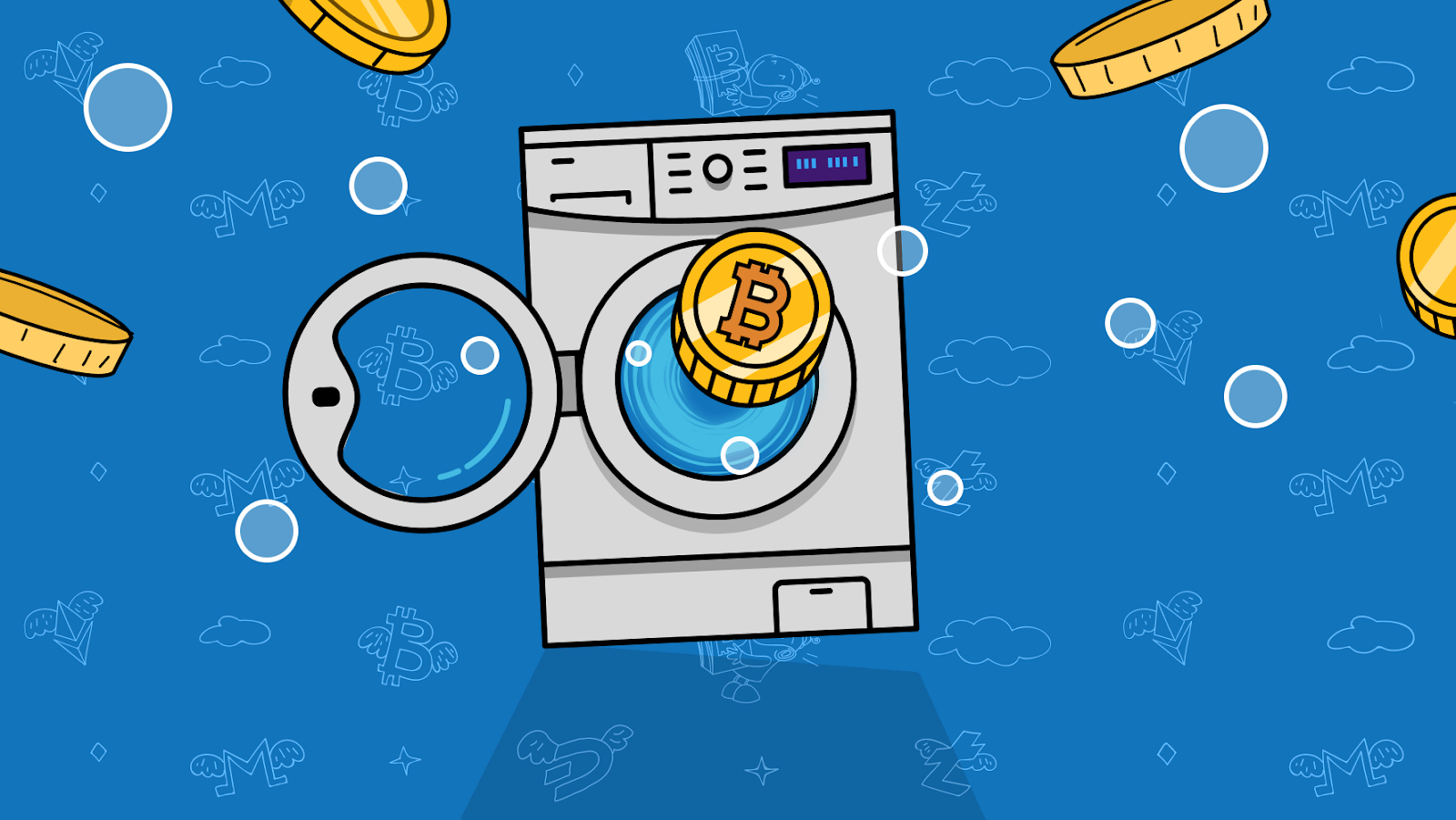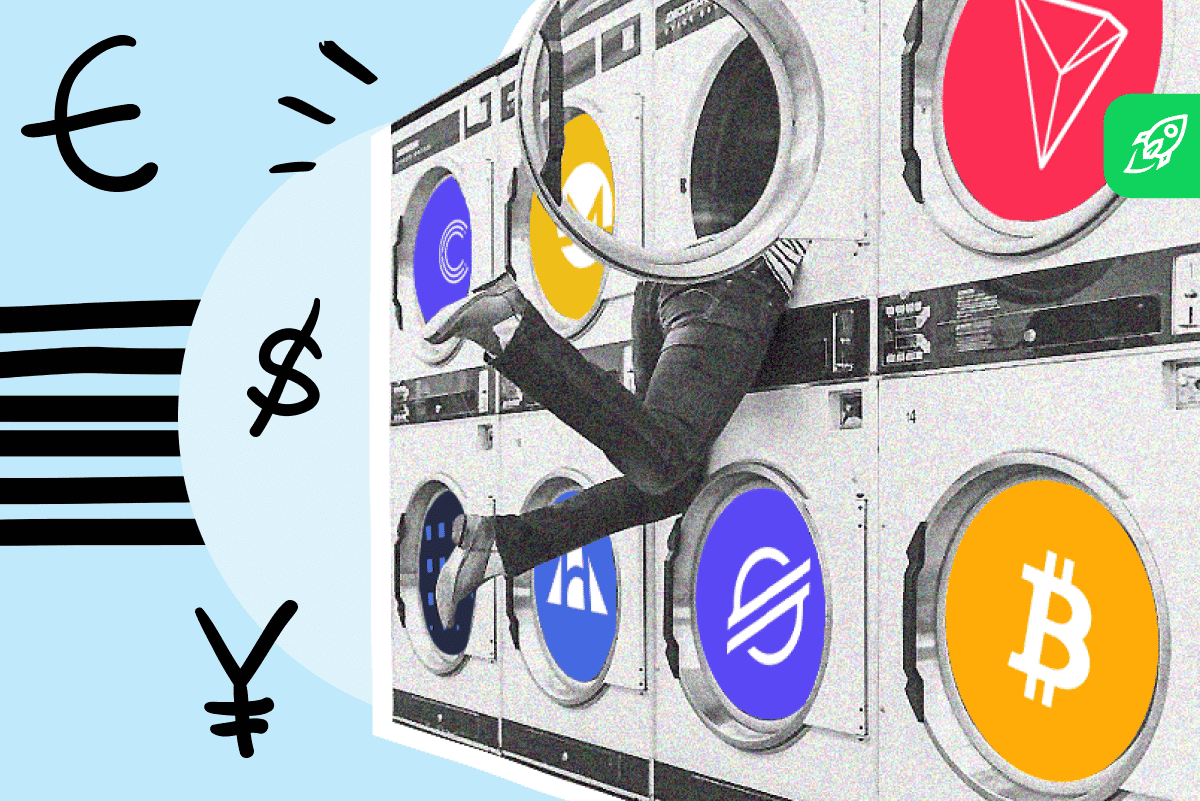.png%3Falt%3Dmedia&w=640&q=75)

What is Wash Trading in Crypto?

Among the hundreds of issues concerning centralized crypto exchanges, wash trading emerges as a prominent concern. Wash trading is when someone sells something to themselves to inflate demand or make it look like there’s more activity in a marketplace. This deceptive practice may be driven by various motives, such as attracting liquidity and customers, creating artificial demand for non-fungible tokens (NFTs), or engaging in tax-loss harvesting.
The primary goal is to create a false impression of higher trading volumes, potentially attracting legitimate trading activity. This deceptive tactic misguides investors into believing that the demand for an asset is more significant than it actually is.
Wash trading is considered illegal under U.S. law, as it undermines the integrity of financial markets. Moreover, the Internal Revenue Service (IRS) prohibits taxpayers from deducting losses resulting from wash trades, adding a financial disincentive to this illicit practice. In essence, wash trading compromises market transparency and carries legal and financial consequences for those involved.
This was just a formal overview of what this illegal activity is. Now, let’s discuss what wash trading in crypto is and how traders can identify such activities and save themselves from potential losses.
Understanding Wash Trading
Wash trading is a deceptive practice where a firm or entity uses self-trading to create artificial effects in the market. Timothy Cradle, Director of Regulatory Affairs at Blockchain Intelligence Group, highlights its purpose: To inflate prices, create a false appearance of liquidity, and attract interest from other investors.
This manipulation can mislead investors into buying tokens at artificially inflated prices, constituting fraud and market manipulation.
Wash trading isn't exclusive to individual wrongdoers; even crypto exchanges may employ this tactic. Exchanges may conduct wash trading to exaggerate their trading volumes, making them appear more active and liquid than they actually are.
Timothy Cradle emphasizes the lack of justification for such practices, stressing that competition in the industry doesn't excuse engaging in wash trading. Maintaining transparency, especially in the cryptocurrency domain where trust is crucial, becomes imperative to foster a healthy and trustworthy market environment.

How Wash Trading in Crypto Works?
Imagine you're in a crowded marketplace, and everyone is checking out the most popular items. In the crypto world, trading volume is like the popularity of a digital coin. Wash traders focus on making a specific crypto look more popular than it really is. They do this by rapidly buying and selling the same coin, creating a fake trading volume. This artificial popularity can attract other investors who think the coin is in high demand.
Picture it like this: You have a bag of candies, and you quickly trade them back and forth with yourself, making it seem like there's a lot of trading activity. Since trading volume affects the coin's price, your bag of candies now seems more valuable. But here's where it gets tricky. Other people see the high cost, think the coin is hot, and buy it. But the price crashes when you decide to sell your coins because it is all fake activity. Now, those other buyers can't sell their coins because there aren't genuine buyers anymore.
In simpler terms, wash trading is like pretending a toy is super popular to trick others into buying it at a high price and then suddenly revealing no genuine interest, causing the value to drop.
How Common is Wash Trading in Crypto?
Wash trading varies in complexity, ranging from simple transactions between wallets to more intricate schemes. Kim Grauer, Director of Research at Chainalysis, identifies wash trades based on specific relationship criteria between wallets and addresses, indicating potential fraudulent activity.
Research from the National Bureau of Economic Research (NBER) delves into the prevalence of wash trading across 29 crypto exchanges, categorized as regulated and unregulated. The study reveals that regulated exchanges exhibit minimal instances of wash trading, while unregulated exchanges, especially Tier-2, see a substantial 77.5% of trading volume attributed to wash trades on average.
Binance, the world's largest crypto exchange, categorized as an unregulated Tier-1 exchange in the study, was estimated to have 46.4% of its transactions attributed to wash trading. Despite this, a spokesperson from Binance vehemently denies any engagement in wash trading and emphasizes the existence of a dedicated Market Surveillance team to monitor and prevent manipulative behaviors.
KuCoin, another prominent exchange, reportedly has 52.9% of its transactions classified as wash trades, although the exchange denies involvement in such practices. The NBER paper also notes a higher incidence of wash trading following positive returns or decreased market volatility, suggesting an incentive for exchanges to inflate volumes to attract attention and clients during these times.
However, identifying wash trades without access to account data, typically held exclusively by exchanges, is challenging. Martin Leinweber, Digital Assets Product Specialist at MarketVector Indexes, underscores the importance of industry regulation, as demonstrated by the study's findings, to maintain integrity and transparency in the crypto market.
Wash Trading in NFTs

Now that we've covered the basics of wash trading in the crypto world let's explore how it applies specifically to NFTs. While the principles are similar, the unique nature of NFTs introduces some differences in how wash trading is conducted.
Unlike fungible tokens with clear trading volumes, NFTs have lower trading volumes due to their uniqueness. However, this also makes it easier to track their movements. Despite this, those with malicious intent can still attempt to hide wash trading activities, especially in the early stages.
Imagine encountering a new NFT project shortly after its release, and you notice specific tokens being priced significantly higher than others despite having similar features. Further investigation reveals increased sales of the same NFT within the past 24 hours, with the token changing hands among seemingly different individuals.
Is this wash trading in action? Not necessarily. A celebrity may have endorsed the token, increasing interest and genuine transactions. However, it's crucial to approach such situations with caution. It's better to be vigilant and steer clear of questionable situations to protect yourself from potential losses.
Quick Link: The Top 10 Crypto Podcasts That Are Worth Listening To
Examples of Wash Trading
Examples of Wash Trading in the cryptocurrency world are mentioned below.
Mt. Gox (2014)
Once the largest Bitcoin exchange globally, Mt. Gox collapsed in 2014, revealing the loss of hundreds of millions of dollars worth of users' Bitcoin. Wash trading was discovered as one of the unethical practices employed by Mt. Gox, contributing to the artificial inflation of Bitcoin prices on its platform. The Mt. Gox case remains one of the most infamous incidents in the history of cryptocurrency exchanges.
Bitfinex and Tether (2018)
The New York Attorney General's office accused Bitfinex and Tether of engaging in a massive wash trading scheme. Allegations involve Bitfinex using Tether's USDT stablecoin to artificially inflate the price of Bitcoin and other cryptocurrencies, creating a false sense of demand. The ongoing case highlights the legal consequences that exchanges may face for wash trading.

Why Do People Get Involved in This Illegal Activity
People primarily engage in crypto wash trading to make quick profits without considering ethical or legal implications. However, another aspect related to taxes prompts some individuals to explore wash trading strategies.
During wash trading, traders may intentionally experience significant initial losses, expecting to sell tokens later for substantial profits. The idea is to use these artificial losses as deductions when declaring taxes. While this might seem tempting, it's crucial to understand that this approach is faulty, and tax authorities have safeguards to prevent abuse.
For example, the IRS has specific measures to address wash trading attempts. The IRS considers wash trading losses from asset sale events within the initial 30 days of acquiring the asset. Additionally, wash-traded amounts are discounted from tax deductions. In simpler terms, even if someone attempts to wash trade to create artificial losses, the IRS won't allow these losses to be used for reducing taxes.

How to Detect Wash Trading
Avoiding falling for wash trading in crypto is crucial to protecting your investment portfolio. Here's a more detailed explanation of how to identify and steer clear of potential wash trading situations, focusing on traditional cryptocurrencies (not NFTs):
1. Analyze Trading Volume
Check the trading volume of a specific crypto project. While popular cryptos often have large trading volumes, critically assess whether the trading activity aligns with the project's popularity and relevance.
Consider factors such as the age of the project, recent launches, mainstream news coverage, and overall online presence. If the trading volumes seem disproportionately high without clear justification, it raises a red flag.
2. Blockchain Explorer Investigation
If you are familiar with blockchain explorers, delve into the project on the blockchain. Examine how many wallets hold the majority of tokens and identify any unusual trading patterns.
Look for wallets that engage in constant, rapid trading without realizing significant gains. Such repetitive and unprofitable trading activities may indicate wash trading.
Also Read: Blockchain Security Services: A Definitive Guide
3. New Tokens and Bullish Markets
Analyzing new tokens, especially in bullish markets, can be challenging. Speculation is high, and distinguishing between genuine interest and wash trading becomes trickier.
Focus on the trading behavior of specific wallets. If one or a few wallets consistently trade the token without apparent benefits, it suggests potential wash trading.
Now that you know how to detect wash trading in crypto tokens, let’s move on to how you can do the same for NFTs:
1. Utilize NFT Marketplaces
Platforms like OpenSea, the largest NFT marketplace, provide insights into the trading history of NFTs. Explore the specific NFT's landing page on such platforms for a transparent view of its trading journey.
2. Identify Suspicious Trading Patterns
Watch out for wallets that trade the same NFT multiple times a day, sometimes hundreds of times, without making profits or even incurring losses. Consistent, high-frequency trading without financial gains is a clear sign of potential wash trading in the NFT space.
Who’s Responsible for Handling It?
Addressing fraudulent activities like wash trading in crypto is complex due to the regulatory ambiguity surrounding cryptocurrencies and NFTs. While stocks and bonds fall under the SEC's jurisdiction, the Commodity Futures Trading Commission (CFTC) regulates commodities like gold and oil. The lack of a clear classification of crypto assets hampers regulators' ability to take legal action against it.
However, individual exchanges can take action. Binance, for instance, has implemented measures to combat wash trading. Last month, the exchange introduced a new opt-in feature, Self-Trading Prevention, to curb unintentional wash trading on its platform. Given the current regulatory uncertainties, this proactive approach by exchanges is seen as a step toward maintaining integrity within the crypto industry.
Wash Trade vs. Cross Trade
Both wash trading and cross trading are generally illegal practices in financial markets. Participants caught engaging in these deceptive maneuvers may face severe legal consequences, including substantial fines and penalties. As you already know, wash trading is the buying and selling of the same asset simultaneously.
In contrast, cross-trading involves the simultaneous buying and selling of different assets. The focus here is on manipulating prices for specific groups of assets. Traders executing cross-trades strategically leverage transactions involving distinct securities to influence targeted asset prices. The outcome may include artificially inflated prices, creating a misleading perception of market demand or value.
Conclusion: Safeguarding Yourself from Wash Trading in the Crypto Market
As an investor or trader in the cryptocurrency market, it is paramount to grasp the mechanics and consequences of wash trading and steer clear of involvement in such deceptive practices. Key strategies to safeguard your investments include opting for reputable exchanges, conducting due diligence, scrutinizing trading volumes and depth, diversifying data sources, and approaching abnormally high returns with a healthy dose of skepticism.
By staying well-informed and vigilant, you shield your investments and contribute to fostering a more transparent and trustworthy market environment. Choosing ethical trading practices not only aligns with regulatory standards but also plays a pivotal role in maintaining the integrity of the broader crypto ecosystem.
Check out Our Blog for more such crypto-related articles.



.jpg%3Falt%3Dmedia&w=640&q=75)